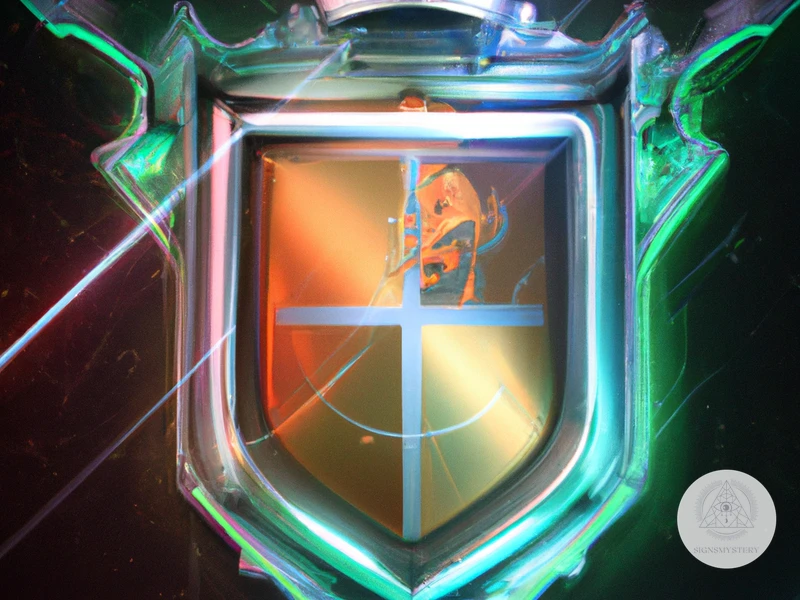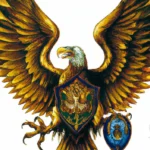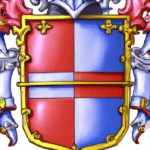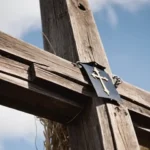Heraldry, the practice of designing and displaying personal coat of arms, has been around since the medieval times. With the rise of the digital age, modern innovations have made it possible to create and design digital coat of arms. In this article, we dive into the world of digital heraldry and explore the process of creating, designing, digitizing, and animating coat of arms. From traditional to modern designs, color choices, and collaboration with clients, to protecting the authenticity of a digital coat of arms through copyright and watermarking, we cover everything you need to know about this ancient practice in the modern era.
What is a Coat of Arms?
A Coat of Arms is a symbol or emblem that represents a person, family, organization, or country. Its origins can be traced back to medieval times in Europe, where they were used as a way of identifying knights and nobles on the battlefield. A Coat of Arms typically includes a shield, helmet, crest, and motto, along with various symbols and colors that have specific meanings. Today, Coat of Arms are still used in modern times for various purposes, such as government entities, branding, and social media. The evolution of Coat of Arms has changed over time with the digital age, with modern designs often incorporating contemporary elements to reflect a more current identity.
Why Create a Digital Coat of Arms?
Creating a digital coat of arms offers several advantages over traditional heraldry. Firstly, it allows you to easily share your coat of arms with a wider audience. With the rise of digital media, it’s becoming increasingly important to have an online presence and a digital coat of arms is a great way to achieve this. It can serve as a symbol for your brand, online business, or personal identity.
Using digital technology to create a coat of arms enables you to incorporate modern designs and symbolism, while still respecting the traditional origins of heraldry. This fusion of tradition and modernity can offer a unique representation of your identity, standing out among others. It also allows for a level of flexibility and experiment, enabling you to tailor your crest design to suit your needs.
A digital coat of arms is easier to modify and update compared to a traditional design. Suppose new elements or changes need to be added, as a new family member or change in organization’s structure. In that case, editing a digital coat of arms is simple with graphic design software. It is also cost-effective as there is no need to pay for expensive printing machines, material and specialist heraldry craftsmen.
Lastly, a digital coat of arms offers protection against theft or misuse. In modern times, it’s easy for someone to copy and misuse your design, which could negatively impact your brand or identity. However, with digital certificates and watermarks, you can protect your coat of arms from unauthorized use.
Creating a digital coat of arms offers a myriad of advantages over traditional heraldry. It offers flexibility, modern aesthetics, protection, and accessibility. It presents to create a unique, personal and professional symbol, giving you a unique way to stand out in the digital age.
Evolution of Heraldry to Digital Age
The evolution of heraldry to digital age has brought about a revolution in the traditional art of creating coat of arms. Heraldry is the practice of designing and displaying coat of arms and other insignia used by individuals, families, and institutions. This practice has been in existence since the Middle Ages when knights wore emblems on their shields for identification purposes. The coat of arms was often used to signify the values, association, and identity of the individual or group. With the advancement of technology, the creation of coat of arms has become more digitized and simplified.
In earlier times, the creation of coat of arms was only enjoyed by the noble class. With time, the middle class also started adopting this practice and began commissioning family crest. However, in today’s digital age, anyone can create a modern coat of arms and reflect their identity and values. With the availability of digital graphics software and tools, the creation of coat of arms has become easier and accessible.
The traditional coat of arms consisted of basic elements such as the shield, helmet, crest, supporters, and motto. With the advent of digital age, these elements have undergone a transformation, and modern coats of arms are designed with the use of 3D graphics, animation, and modern symbols that represent an individual or an institution’s values, identity, or culture.
The creation of coat of arms has also evolved for several purposes in today’s digital world. The modern coat of arms is used for branding and commercial purposes for businesses and organizations. Governments still continue to use traditional coat of arms for their emblems, but some cities and municipalities are adopting modern coats of arms to represent their identity and culture. Social media users also create their personalized modern coat of arms to represent their virtual identity.
The evolution of Heraldry to digital age has revolutionized the traditional practice of creating coat of arms. It has enabled individuals and institutions to create modern coats of arms that represent their values, culture, and identity. The availability of digital tools and software has made it easier for anyone to create their modern coat of arms. With the continuing evolution of technology, the creation of coat of arms will continue to grow and transform.
Designing a Digital Coat of Arms
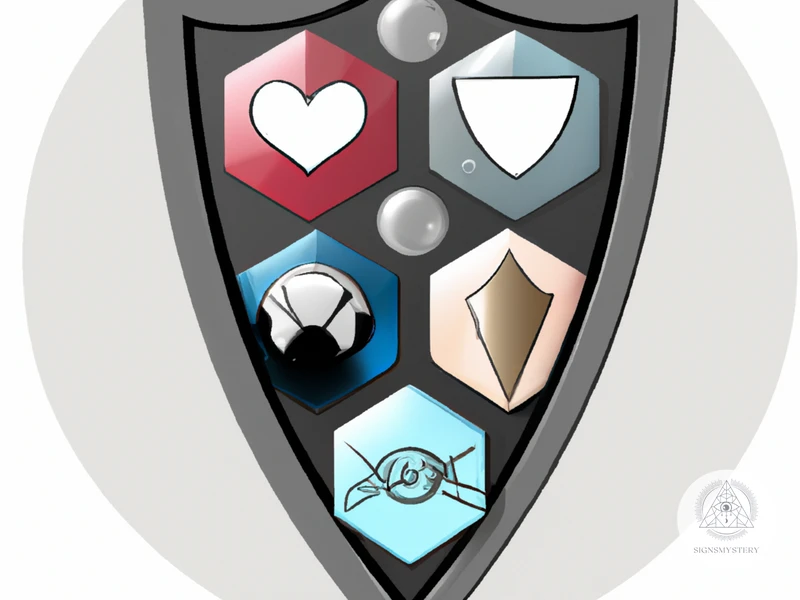
When designing a digital coat of arms, it is crucial to strike a balance between traditional design and modern aesthetics. While some may prefer a classic look that adheres to historical heraldic standards, others may want a more contemporary approach that better reflects their identity and culture. Colors and symbols play a significant role in the design of a coat of arms, as they convey meaning and represent values. Effective use of design tools and software can bring ideas to life, while collaboration with clients ensures that the final product meets expectations. To see some examples of modern coat of arms branding, check out /modern-coat-of-arms-branding-examples/.
Traditional vs. Modern Designs
When creating a digital coat of arms, designers often face the dilemma of choosing between traditional or modern designs. Traditional designs reflect history, culture, and values, while modern designs represent progress, innovation, and change.
Traditional coat of arms often feature heraldic symbols like lions, eagles, and other animals, that denote power, nobility, and heritage. The shields are usually divided into sections or quarters, with each section representing a particular family or kingdom. These symbols are steeped in tradition and are often passed down through generations.
On the other hand, modern designs are more flexible and allow designers to create unique and innovative representations of their clients. Modern coat of arms can incorporate contemporary symbols and meanings that reflect the values and culture of the client.
Another important factor to consider when making a choice between traditional or modern designs is the audience. Traditional coat of arms may appeal more to older, conservative, and traditional clients, while modern designs will resonate more with younger, progressive, and diverse audiences.
Regardless of which design style is chosen, it is important to ensure that the design is visually appealing and communicates the message of the client clearly.
Both traditional and modern designs have their unique advantages, and the choice will depend on the goals, values, and audience of the client. Designers should take into account the rich history and symbolism of traditional coat of arms while being creative and innovative in modern designs. The design should be authentic and original to the individual or organization that it represents.
If you want to learn more about how modern innovations are being used in government coat of arms, check out our article on modern coat of arms in government.
Importance of Colors and Symbols
Colors and symbols play a crucial role in the creation of a digital coat of arms. The choice of colors and symbols can communicate a lot about the family or organization that the coat of arms represents.
In heraldry, each color and symbol has a specific meaning. For example, red is associated with strength and valor, blue with truth and loyalty, and green with hope and joy. Similarly, symbols such as lions and eagles represent courage and power, while oak trees and roses symbolize strength and beauty.
When creating a digital coat of arms, it is important to consider the meanings and symbolism associated with each color and symbol. This can help to communicate the values and identity of the family or organization that the coat of arms represents.
However, in modern times, there has been a shift towards using contemporary symbols in coat of arms design. These symbols represent the changing values and culture of the society. For instance, coats of arms featuring images of mobile phones and social media have become increasingly popular to represent the digital era. (source)
Here is a list of commonly used colors and their meanings in heraldry:
| Color | Meaning |
|---|---|
| Red | Strength, Valor, or Martyrdom |
| Blue | Truth, Loyalty, or Wisdom |
| Green | Hope, Joy, or Loyalty in Love |
| Purple | Royalty, Sovereignty, or Justice |
| Black | Grief, Humility, or Wisdom |
| White/Silver | Purity, Innocence, or Peace |
| Gold/Yellow | Wealth, Wisdom, or Nobility |
In addition to colors, the symbols used in a coat of arms also have specific meanings. Here are some common symbols used in heraldry and their meanings:
- Lion: Courage, Power, or Generosity
- Eagle: Strength, Courage, or Fortitude
- Horse: Readiness for Battle or Assistance
- Dragon: Defender of Treasure or Ferocity
- Fleur-de-Lis: Purity, Light, or French Ancestry
- Oak Tree: Strength, Endurance, or Hospitality
- Rose: Love, Hope, or Beauty
The colors and symbols used in a digital coat of arms should not only be visually pleasing but also communicate the values and identity of the family or organization that it represents. Whether traditional or contemporary, the coat of arms should be a true representation of the family’s or organization’s culture, heritage, and values. (source)
Design Tools and Software
Designing a coat of arms from scratch can be a challenging task, but with the help of modern design tools and software, it can be much easier. There are a variety of design tools and software available that can aid in the creation of digital coat of arms. Some popular design tools include Adobe Photoshop, Adobe Illustrator, CorelDRAW, and Inkscape. These design tools offer a range of features and functionalities to make the design process smooth and efficient.
Adobe Photoshop is a raster-based image editor that provides a wide range of features for editing and creating images. With its robust features, Photoshop can help create intricate and elaborate details in the coat of arms design. Adobe Illustrator, similar to Photoshop, is a vector-based software but primarily used for creating vector graphics. This software comes with an extensive collection of tools, including brushes, symbols, and effects, that can be used to design a unique coat of arms.
CorelDRAW, another vector-based graphics software, is a favorite among designers for its user-friendly interface and ability to create complex designs easily. The software prides itself on being able to design not only simple logos, but also advanced designs such as digital coat of arms.
Inkscape is an open-source platform for creating vector graphics, offering similar features to Adobe Illustrator, but for free. This software is perfect for budget-conscious entrepreneurs or starting digital artists. With its availability and user-friendly interface, Inkscape is a go-to software.
With the latest design tools and software, anyone who can visualize their ideas can create a unique and stunning digital coat of arms with ease. The selected software primarily depends on designer’s work requirements and capabilities. It is essential to choose the right software that can provide the designer with the most streamlined workflow, and fits the budget.
Collaboration with Clients
Creating a digital coat of arms involves a back-and-forth process between the designer and the client. Collaboration with the client ensures that their vision and values are properly reflected in the final design. Communication is key, and the designer should take the time to understand what the client wants to convey through their coat of arms.
During the initial stages of collaboration, the designer should ask the client questions about their family history, interests, and aspirations. This information will help in choosing appropriate symbols and colors for the coat of arms. The designer should provide several design options that incorporate the client’s ideas and suggestions. The client should be able to provide feedback on each design and request changes as needed.
Once a design is chosen, the designer should provide a final draft of the digital coat of arms for approval by the client. It is common for changes to be requested at this stage, such as modifications to the colors or positioning of symbols. It is important for the designer to be flexible and open to making changes to ensure that the client is satisfied with the final product.
Collaboration with clients also extends to the digitizing and animating stages of creating a digital coat of arms. The designer should update the client on progress and provide samples for approval. The client should be able to provide feedback and request modifications during these stages as well.
Successful collaboration with clients is essential for creating a digital coat of arms that accurately represents their identity and values. By working together, the designer and client can ensure that every aspect of the coat of arms is meaningful and personalized.
Traditional vs. modern designs and modern culture identity are also important factors to consider in collaboration with clients, as they can influence the design choices and overall message of the digital coat of arms.
Digitizing and Animating Coat of Arms
Once the design of the digital coat of arms is finalized, it can be digitized and animated to make it even more appealing and eye-catching. Digitization involves scanning and vectorizing the design to convert it into a digital file format that can be easily edited and manipulated, while retaining its original quality and clarity. This can be done using specialized software and tools that are specifically designed for this purpose. Once the digital file is created, animation techniques can be used to bring the coat of arms to life with movement and visual effects. This can make it more engaging and interesting for viewers, especially when used in digital marketing or advertising campaigns.
Scanning and Vectorizing
Once you have designed your coat of arms, the next step is to digitize it. This can be achieved through scanning and vectorizing.
When scanning the design, it is important to use a high-resolution scanner in order to capture all the details of the design. Once scanned, the image is often in a bitmap format, which is not ideal for scaling and editing.
This is where vectorizing comes in. Vectorizing is the process of converting the scanned bitmap image into a vector-based image using software such as Adobe Illustrator or CorelDRAW. Vector images can be scaled infinitely without losing resolution, making them perfect for any size display or reproduction.
In order to vectorize the image, the software traces the outline and fills of the design using mathematical equations. This allows for fully editable outlines and colors that can be adjusted and refined to your liking.
However, the process of vectorizing can be time-consuming and require a skilled designer to ensure the accuracy and quality of the final product. It is important to work with a qualified professional to achieve the best results.
| Advantages of Vector Images | Disadvantages of Vector Images |
|---|---|
| Can be infinitely scaled without losing quality | Can appear too precise or artificial |
SmallSubscribe to Our NewsletterSign up to receive the latest news and updates. |
Complicated designs can be time-consuming to create |
| Easy to edit and adjust colors and outlines | Cannot display the same level of detail as raster images |
Scanning and vectorizing a coat of arms design is an essential step in creating a digital version that is suitable for a wide range of applications. It requires skill and attention to detail, but the benefits of the high-quality vector image make it a worthwhile investment.
Animating Coat of Arms
Animating a coat of arms can add a new level of dynamism to a digital representation. There are several techniques to animate a coat of arms, ranging from simple movements to complex stylized animations.
One popular way to animate a coat of arms is by using 3D modeling software such as Blender or Maya. These tools allow designers to create a 3D model of the coat of arms and animate it by moving and rotating it in space. The result is a dynamic representation that adds depth and dimensionality to the design.
Another popular technique for animating a coat of arms involves creating a series of 2D animations that are then combined into a single sequence. This can be done using traditional hand-drawn animation techniques or by using software such as Adobe After Effects. The result is a fluid and seamless animation that can showcase the various symbols and colors of the coat of arms.
One interesting development in the world of coat of arms animation is the use of augmented reality (AR) technology. By using a mobile device or headset, viewers can see the coat of arms come to life in a real-world environment. This adds a new level of interactivity and engagement to the design, allowing viewers to explore the various elements of the coat of arms in real-time.
Regardless of the technique used, animating a coat of arms requires a keen understanding of the design and its various symbols. It’s important to ensure that the animation remains true to the original concept, while also showcasing the new level of dynamism that animation can bring to a design.
Here are some tips to keep in mind when animating a coat of arms:
- Keep the animation simple and easy to understand
- Ensure that the animation flows seamlessly from one movement to the next
- Use colors and lighting effects to highlight different aspects of the design
- Consider the context in which the animation will be viewed (e.g. on a website, as part of a video, etc.)
- Take feedback from clients and viewers to refine the animation and make it more effective
Animating a coat of arms can be a powerful way to showcase the history and heritage of a family, organization, or community. By using modern technology and design techniques, designers can create stunning animated representations that bring the coat of arms to life in new and exciting ways.
Protecting Digital Coat of Arms
Protecting your Digital Coat of Arms is crucial to maintain its value and uniqueness. One way to ensure its protection is through the application of Copyright and Trademark Laws. Both safeguards provide legal protection against misuse, copy, or reproduction of your design by unauthorized persons. Watermarking can also be used to protect digital reproductions of your design. This can be done using software programs or online tools, including Adobe Photoshop and Shutterstock. Another way to protect your digital design is through the use of Digital Certificates of Authenticity. This certificate can authenticate your coat of arms’ originality, authorship, and rightful ownership. Protecting your digital coat of arms is vital and can be achieved through legal protection, watermarking, and digital certificates of authenticity.
Copyright and Trademark Laws
When creating a digital coat of arms, it is important to consider the legal aspects of protecting your work. In most jurisdictions, a coat of arms is considered intellectual property and is protected under copyright and trademark laws. It is important to understand these laws and take appropriate measures to protect your design.
Copyright Law
Copyright law protects original works of authorship, including digital coat of arms designs. As the creator of a digital coat of arms, you have the exclusive right to reproduce, distribute, and display your work. This means that others cannot use your design without your permission.
To enforce your copyright, you may want to consider registering your digital coat of arms with the relevant authorities. This will provide you with legal evidence of your ownership of the design and make it easier to take legal action against those who infringe your rights.
Trademark Law
Trademark law protects designs, symbols, logos, or phrases that are used to identify goods and services. If your digital coat of arms is used to identify your business or organization, it may qualify for trademark protection. This means that no one else can use your design in connection with similar goods or services.
To apply for trademark protection, you need to file a trademark application with the relevant trademark office. This can be a complex process and it is recommended to seek guidance from a legal professional.
Conclusion
Copyright and trademark laws play a crucial role in protecting your digital coat of arms. By understanding these laws and taking appropriate measures to protect your design, you can ensure that your work remains unique and valuable. Remember to register your copyright or apply for a trademark if needed, and consult with a legal professional for guidance.
Watermarking and Digital Certificates of Authenticity
To protect the legitimacy of a digital coat of arms, it is essential to use watermarking and digital certificates of authenticity. Watermarking is the process of adding an unobtrusive but identifiable mark to the image. It is usually a logo, a symbol, or a signature that is overlaid on top of the coat of arms, which cannot be removed without destroying the integrity of the image. The watermark helps protect against fraudulent use of the digital coat of arms by others.
Another way to secure the authenticity of a digital coat of arms is by using digital certificates. A digital certificate is a secure electronic file that contains information about the identity of the owner of the coat of arms, as well as the details of the design, creation, and ownership. It is issued by a trusted authority, such as a government agency, to confirm that the coat of arms is authentic and legally owned by the owner.
Digital certificates of authenticity can be issued to both individuals and companies. They are an effective way of ensuring that the coat of arms is not being used illegally or without authorization. Once a digital certificate is issued, it can be included as part of the metadata of the digital image, thereby making it possible to track who owns the digital coat of arms and where it is being used.
To sum up, watermarks and digital certificates of authenticity are vital components in safeguarding digital coat of arms. They provide a layer of protection against counterfeit use of the design, thereby preserving the originality and uniqueness of the coat of arms. As digital technologies continue to evolve, watermarking and digital certificates of authenticity will remain an essential part of digital coat of arms protection.
Conclusion
In conclusion, the creation of digital coat of arms is a modern innovation in the field of heraldry. It brings an interesting twist to the traditional art form of designing and displaying family crests. The transition from traditional to digital heraldry is a significant evolution towards a more modern and dynamic approach to coat of arms design.
The process of designing a digital coat of arms involves understanding the purpose of the design, the values and principles of the family or organization, and the colors and symbols that represent them. As seen in this article, there are various design tools and software that can aid in the creation of unique and visually appealing digital coat of arms.
Moreover, the digitization and animation of coat of arms add an exciting dimension to the traditional form of heraldry. Animating coat of arms breathes life into the designs and allows for more interactive and engaging ways of displaying them.
However, while it is exciting to create digital coat of arms, it is crucial to protect them from copyright infringement and misuse. Copyright and trademark laws are in place to safeguard digital coat of arms from unauthorized use. Watermarking and digital certificates of authenticity further protect the digital coat of arms from misuse.
In conclusion, the creation of digital coat of arms is an exciting and innovative way of displaying family or organizational values and symbols. It is a fusion of tradition and modernity that adds a new dimension to the art of heraldry. With proper protection and maintenance, digital coat of arms can be a lasting legacy for generations to come.
Frequently Asked Questions
What is the difference between a traditional coat of arms and a digital one?
A traditional coat of arms is a physical representation of a family or organization’s identity through symbols and colors on a shield or crest. A digital coat of arms, on the other hand, is a modern, computer-generated version that can be easily reproduced and shared online.
What are some common colors and symbols used in coat of arms designs?
Common colors used in coat of arms designs include red, blue, green, yellow, and black. Common symbols include lions, eagles, stars, shields, and swords.
What design tools and software can be used to create a digital coat of arms?
Popular design tools and software for creating digital coat of arms include Adobe Illustrator, CorelDRAW, Inkscape, and Affinity Designer.
What is the process for scanning and vectorizing a physical coat of arms design?
To digitize a physical coat of arms design, it must first be scanned to create a digital image. From there, it can be vectorized using software to create a scalable and editable design.
How can a digital coat of arms be animated?
A digital coat of arms can be animated using software such as Adobe After Effects or Blender, which allow for the creation of custom animations and effects.
Is it necessary to copyright or trademark a digital coat of arms?
While it is not necessary to copyright or trademark a digital coat of arms, doing so can provide legal protection against unauthorized use or replication of the design.
What is watermarking, and how can it be used to protect a digital coat of arms?
Watermarking is the process of adding a digital mark to an image or design to identify the owner and discourage unauthorized use. Watermarking can be used to protect a digital coat of arms by adding a visible or invisible mark to the design.
What is a digital certificate of authenticity, and how can it be used to protect a digital coat of arms?
A digital certificate of authenticity is a document that verifies the authenticity of a digital file, such as a digital coat of arms design. It can be used to provide proof of ownership and can help protect the design from unauthorized use.
What are some tips for collaborating with a client on a digital coat of arms design?
To collaborate effectively with a client on a digital coat of arms design, it is important to actively listen to their needs and preferences, provide multiple design options, and be open to feedback and revisions.
What are some potential benefits of creating a digital coat of arms?
Potential benefits of creating a digital coat of arms include increased visibility and brand recognition, easier sharing and distribution, and the ability to easily update and modify the design as needed.

